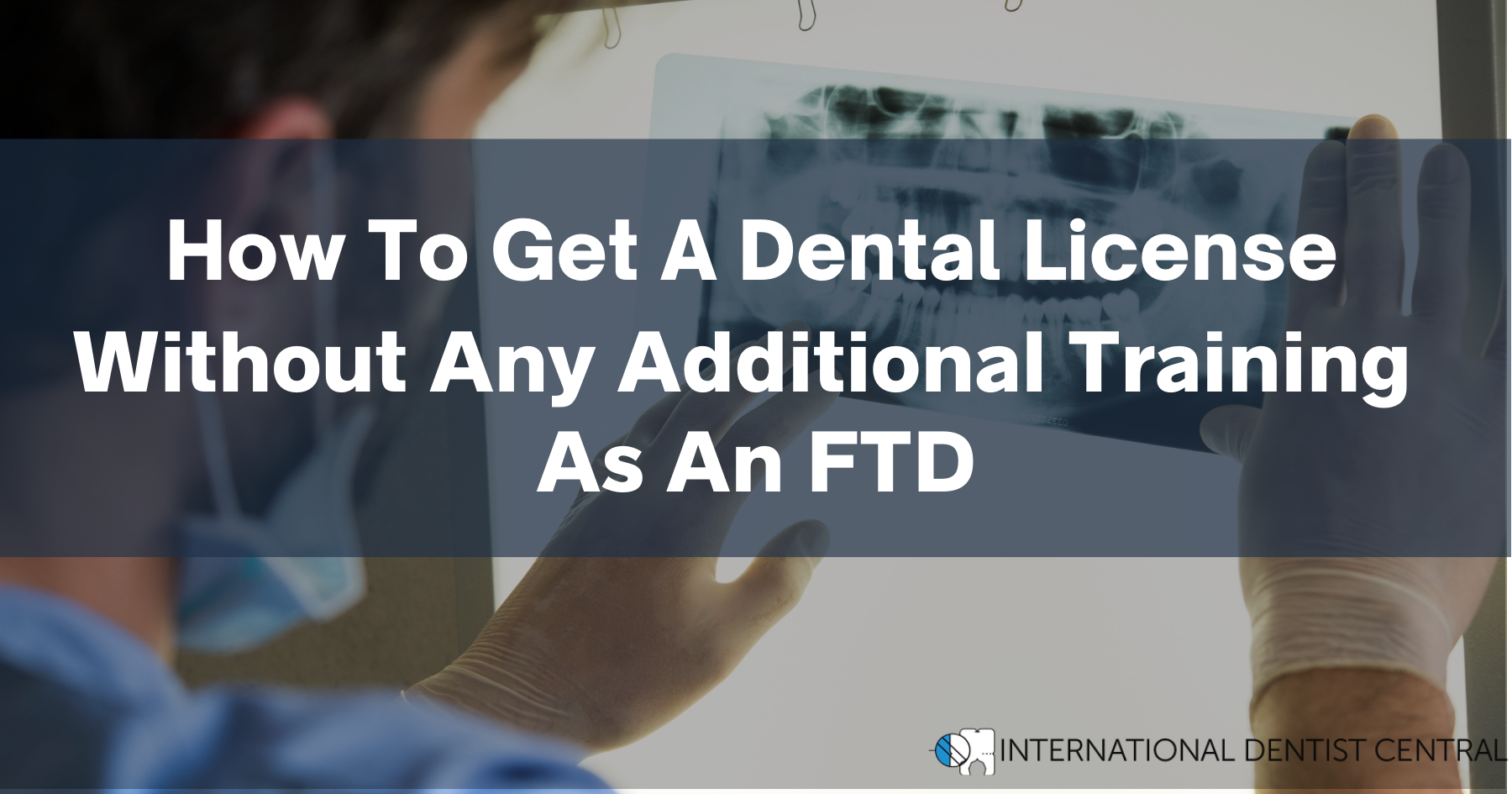Generally speaking, for internationally trained dentists, learning how to get a dental license without any additional training in the U.S. can seem nearly impossible. Most states require you to complete either an Advanced Placement Program or a residency.
But there is 1 state in the US that has a path open to internationally trained dentists, so they do NOT need to acquire any additional training to become a licensed dentist in the state. That’s Minnesota, and in this video, I wanted to share the process you can follow to get an MN dental license, without doing any additional training.
Resources mentioned:
On Minnesota’s board of dentistry’s website, they say that A graduate of a dental college in another country must not be disqualified from examination solely because of the applicants foreign training if the board determines that the training is equivalent to or higher than that provided by a dental college approved by the Commission on Dental Accreditation of the American Dental Association or a successor organization.
If the Minnesota dental board determines that the training you received in your dental school is equivalent to or higher than that provided by an American dental school, you can get a license by going through this process.
6 Steps to Get A Dental License Without Any Additional Training
It’s a 6 step process that you go through sequentially. And you have to pass each step to proceed to the next one.

List of all of the tests they accept:
- The MN dental board wants to evaluate the education you received in your dental school. You can only proceed with the rest of the steps if they deem that your school’s curriculum and your performance is up to the standards their looking for.
You need to get your education evaluated, but they don’t take ECE or WES, which is what most dental schools accept. They ONLY take evaluations coming from a company named Foreign Credentials Service of America. You do need to take the boards to apply.
You’ll gather all of the documents they ask for – which include your diploma, TOEFL test result, the evaluation from Foreign Credentials Service of America, a fee, and a few more things. They want to know how long, and where you’ve practiced dentistry, so this option probably won’t work for fresh graduates. Once you submit that, the board will determine if you can proceed to the next step or not. - If you get a green light you move on to the second step, which is an interview. They want to see some cases you’ve treated at this time, so get those ready ahead of time. They’ll also discuss clinical dentistry with you to see if you are practicing dentistry according to the standard of care.
- If you successfully complete the interview, you move on to the third step, which is taking the Minnesota Bench Exam. This is a test you’ll take at the Univ. of MN, and there isn’t a set schedule for it. Their website says it’s coordinated once they have a certain number of applicants that need to take it.
- Step 4 is taking a clinical board examination. After passing their bench test, the MN dental board will give you permission to take a board examination. They say ‘give you permission to take the board’ because, in order for you to take it without having received dental education here in the US, the dental board will need to write a letter to the board. They accept many tests, the most commonly administered tests are the WREB and CODA, which used to be called NERB. You’ll need to pass a board exam within 18 months, with no more than 2 fails and one remediation.
- After passing the boards successfully, you can now submit an application for a Limited General Dental License or an LGL license. You’ll work under a supervising dentist that the board approves for 3 years.
- Now you can apply for a full dental license for the state of MN, without restrictions.
These are all the steps you’ll need to go through to become a dentist in Minnesota, without going through additional training or taking on any student loans. It’s a long path, but so are all the other paths available to internationally trained dentists, and I think it’s a great option for those that received dental education that’s up to par with ADA accredited programs and have some practice years under their belt.
Related articles:
- Which States You Can Practice After Doing A Residency Program
- Why You Should Consider Advanced Placement Programs Over Residency Programs
- Dental Residency Programs for Foreign-Trained Dentists
- States That Accept Dental Licensure By Residency
Frequently Asked Questions (FAQs)
1. Can I apply for a dental license in Minnesota right after graduation from a foreign dental school?
Not usually. The Minnesota Board of Dentistry prefers applicants who have clinical experience after graduation. You’ll need to provide documentation of your practice history, so fresh graduates typically do not qualify for this route.
2. Do I still need to take the NBDE (National Board Dental Examination)?
Yes. You must pass the NBDE or INBDE as part of your documentation and licensure process. This is a requirement before applying to the Minnesota Dental Board.
3. Can I use an evaluation from WES or ECE?
No. Minnesota only accepts education evaluations from Foreign Credentials Service of America. WES and ECE evaluations will not be considered.
4. How long does the entire licensing process take in Minnesota?
The timeline can vary depending on:
- How quickly your documents are processed
- When the Bench Exam is scheduled
- How soon you pass the clinical board exam
On average, the process can take 12 to 24 months, especially considering the 3-year Limited General Dental License period before obtaining a full license.
5. Is Minnesota the only state offering this option without additional training?
Yes, as of now, Minnesota is the only U.S. state with a defined path to licensure that does not require additional U.S.-based education or residency for foreign-trained dentists, assuming your education and experience are equivalent to ADA standards.




Hello,
My documents are evaluated by FCSA , how can I send them to addmission team to Minnesota ?
Hello, Morteza,
Unfortunately, I don´t have that information in hand right now. Look for their website and contact them directly in the contact section and ask them how to send them your documents. Wish you the best of luck in your journey!
What happens qfter 3 years license. I believe I can apply for full license. But that will be only for Minnesota. Can I work in other states as well?
Hello Tej,
Unfortunately, we don´t manage that type of information. You could ask to your tutor or to the Minnesota´s Dental Board directly on their website.
Wish you the best of luck in your journey!
Can I work as a dental hygienist with my dentistry diploma ? The main reason is because I need a visa to enter to US
Hello Magali,
I don´t think you can work as a dental hygienist with your dentistry diploma. Also, for any type of work you want to do in the US you may need Visa.
Wish you the best in your journey!
Thank you very much , can you help me to prepare my document for this license ?
Since this is a complicated and unique process, we’d be happy to walk you through it as best we can during a coaching session with Dr. Alyssa here: https://internationaldentistcentral.com/hourly-services/